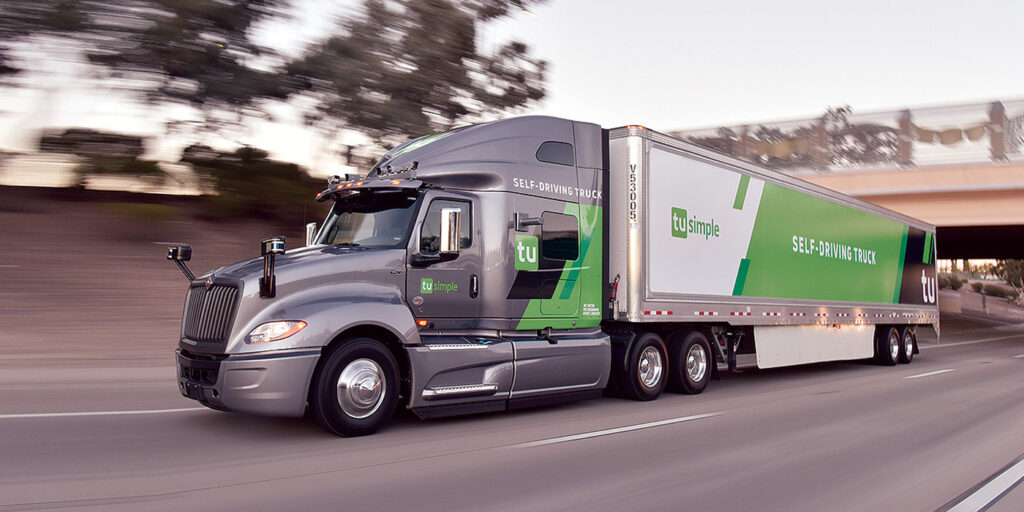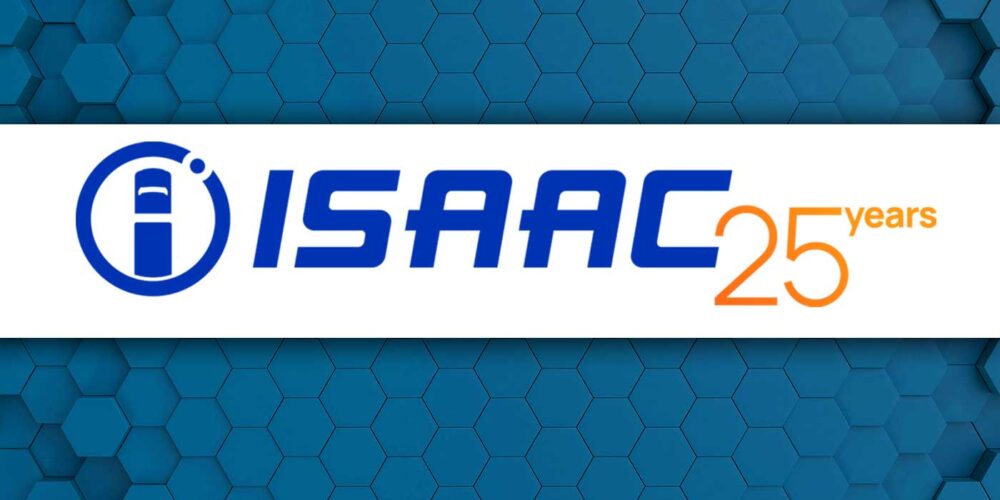We’re coming to the point in automated driving technology development where self-driving developers and OEMs are zooming past the theoretical “What if?” and starting to answer real-world questions. One of the biggest is: Where does the liability land in the event of a collision when the Level 4 automated truck is driving itself under its own technological capabilities, even with a driver still sitting, hands-off, in the driver’s seat?
“With an emerging technology like this with no track record, we all struggle with how to compare the AV technology and its safety performance versus the safety performance of human-driven trucks,” said Jim Mullen, chief administrative and legal officer with TuSimple, a self-driving technology company. TuSimple recently formed a strategic partnership with Navistar to co-develop SAE Level 4 self-driving semi-trucks targeted for production by 2024, as well as a strategic partnership with Goodyear to provide tires and tire management solutions to TuSimple’s Autonomous Freight Network (AFN).
TuSimple’s latest partnership is with Liberty Mutual Insurance to answer the liability question and set a benchmark for the safety of self-driving trucks. Working together, the two will develop metrics to enable a comparative analysis between the safe driving of its automated truck technology compared with that of a human driver.
“One of the things that make it difficult is the lack of sufficient data to make an apples-to-apples comparison,” Mullen explained. “We run from Phoenix to Tucson a lot, and we know what our performances are like in that lane. We will continue to try to make that apples-to-apples comparison of miles traveled in that particular geographic lane compared with those manually driven in the lane.”
Mullen knows, however, that the system performance in one lane doesn’t equate to the same performance in another.
“My safety performance is going to be much different in other situations, and so what we’re really going to do with Liberty Mutual is flesh out how we can make a meaningful comparison in different settings,” he said. “We’re going to leverage their decades of experience in that space as well as what we’re doing on our end.”
The task can seem monumental given the varieties of routes U.S. trucks drive every day, but when you start breaking up the task into digestible data-collecting bites, you can start to see how the data points can add up. Just as many fleets are scoring driver behavior and safety, so too can TuSimple track the safety performance of its Virtual Driver (that’s what they call their Level 4 self-driving technology), and the Virtual Driver is more sophisticated than you may assume, according to Mullen.
“We’re able to do surface road transportation—we can go from distribution center to warehouse distribution center to distribution center. We will be doing ‘in town, surface road’ operation. We do them every day,” he said. But that’s not to say that a driver isn’t needed at all.
“We’re not going to go into downtown New York City, DC or large metropolitan areas. There’s always going to be that need for that final mile,” he said.
If TuSimple’s scope of automated driving capabilities just gave you pause, it’s because we’re quickly approaching the point where data could potentially tell (and if you’re Mullen, certainly will tell us) that an automated virtual driver is safer than a professional human driver. It’s a sort of Uncanny Valley, if you will; it can feel wrong, even though the data could potentially prove it.
But consider this:
“If you look at the causes of accidents involving large trucks, and this is DOT’s data, more than 87% is caused by human error; so if you take out the human element and replace it with artificial intelligence, you no longer have distracted drivers, you no longer have fatigued drivers, you no longer have impaired drivers,” Mullen said. “We believe this is going to substantially improve highway safety. We just need a quote with the metrics to show people that. It’s incumbent upon us to be able to show people why what we believe is actually true.”
Even with the data proving it, that’s a hard truth to believe. Professional drivers have decades of experience, they’ve seen situations most motorists couldn’t even dream of, and they handle themselves and the equipment accordingly. Mullen knows that automated driving technology will inherently be held to a higher standard. Humans make mistakes, and as humans, we recognize that in other people. We’re not as lenient when it comes to technology. The first time there’s an accident involving a virtual driver, fingers will be pointed at the self-driving software.
“That’s exactly right,” Mullen said. “That’s one of the precise purposes of this analysis and partnership with Liberty. As we continue to accumulate more and more miles, we need to be transparent, we need to be proactive and we need to educate.
“We’ll do it through other avenues as well,” he continued, “because there will be an event likely at some point in time where there’ll be an accident and it might be a failure of either the hardware, software or the algorithms – the intelligence, itself. That will happen. But when you compare the frequency of those events to a human operated vehicle, the delta is going to be significant in favor of the performance of the AV.”
In that event, it means shifting the liability to the developers of the self-driving technology, and Mullen noted that should be a responsibility taken on, not just by TuSimple, but all self-driving technology developers.
“TuSimple will take the human out of the truck and the AI will be driving the truck,” he said. “If you look at the current model of insurance, once TuSimple activates the virtual driver to operate that commercial truck until we come to the destination, any event that occurs is the responsibility and liability of TuSimple. We already have insurance for that today.”
Perhaps the true test of the technology goes beyond the data to getting fleet managers into the trucks and having them experience TuSimple’s Virtual Driver for themselves. It would mean that the experience of trusting the technology is supported by the safety data collected by TuSimple and Liberty Mutual Insurance, rather than trying to use the data to change someone’s mind about a technology that can seem incredibly foreign until they give it a chance.
“The first time I was on a TuSimple truck, I was amazed at how advanced it was and at how close it is to being commercialized,” Mullen noted. “Not only because it did everything it was supposed to do, but it handled both of those conditions—surface roads and interstates—extremely well.”
So well, in fact, that after riding with TuSimple’s Virtual Driver regularly, it’s not the technology he’s worried about.
“My biggest concern is the other motorists around us and making sure that they’re doing what they’re supposed to be doing,” he said. TuSimple continues to partner with motor carriers and bring fleet managers to its Tucson headquarters to experience the technology for themselves as they roll forward in changing the hearts and minds of the trucking industry.
“In my opinion, having been around the industry for 15 years, [self-driving trucks are] going to not only change the trucking industry, but it’s going to change the supply chain,” he said. “You’re going to cure the driver shortage, which we all know is real. It’s absolutely going to improve highway safety. And then lastly, if you want to talk about the environment, it’s a greener solution as an analysis between our AV miles and our manually driven miles shows a 10% miles per gallon improvement in AV miles versus manual miles.”
Clearly, this is just the beginning of the self-driving truck conversation when it comes to real world application.













